I knew of Patrick Blanc‘s work long before I knew of him. The first time I experienced one of his gardens was sometime in 2007 when I happened to walk around the side of the BHV Homme in Paris. I was dumbstruck at seeing a wall of plants on the side of the building. I’d never seen such a thing and I wasn’t even sure if they were real. They were.
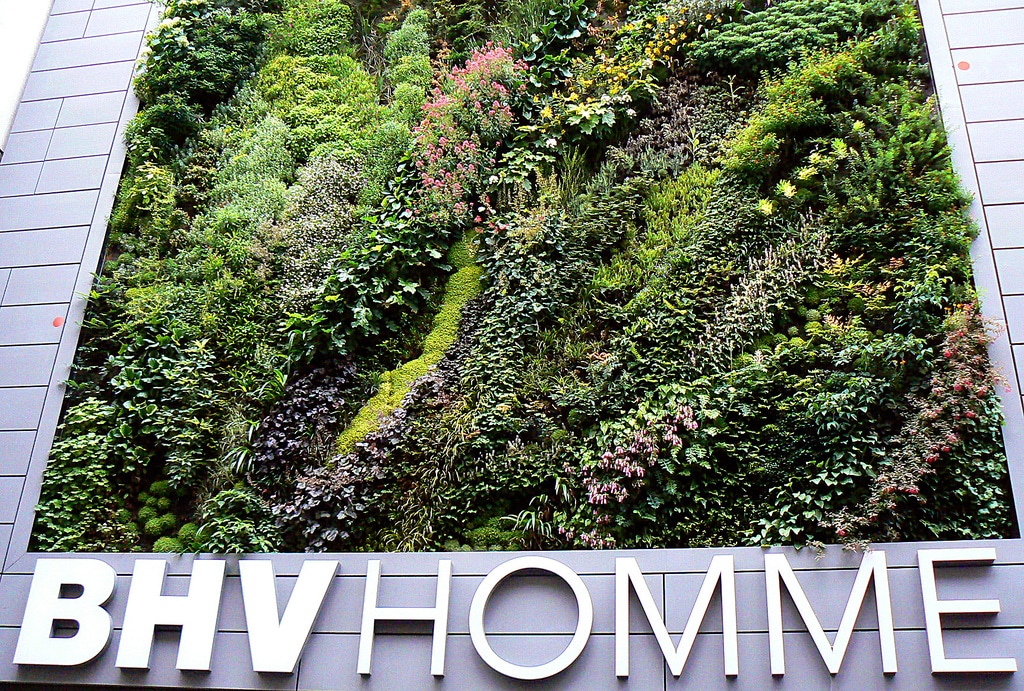
Since then, I’ve happened across a few of his other installations during various travels. Every time, they stop me in my tracks. There is just something extraordinary about seeing a garden on the side of building or draped up and around some other improbable thing.
Patrick Blanc’s vertical garden walls are works of art and botanical feats. As a Frenchman, many of his early installations were in France. But as his fame and notoriety have grown, his work now spans the globe.
Each planting is a textural tapestry of plants that offer green lushness to a surrounding area that is typically in dire need of something soft, living and fresh.
The walls he creates provide biodiversity in urban areas, they help buildings with heating and cooling and they clean the air. To me, they are some of the most beautiful and inspiring arrangements of plants I know. It is not surprising that his work has tipped off a trend that has seen a peak and even a subsequent backlash.
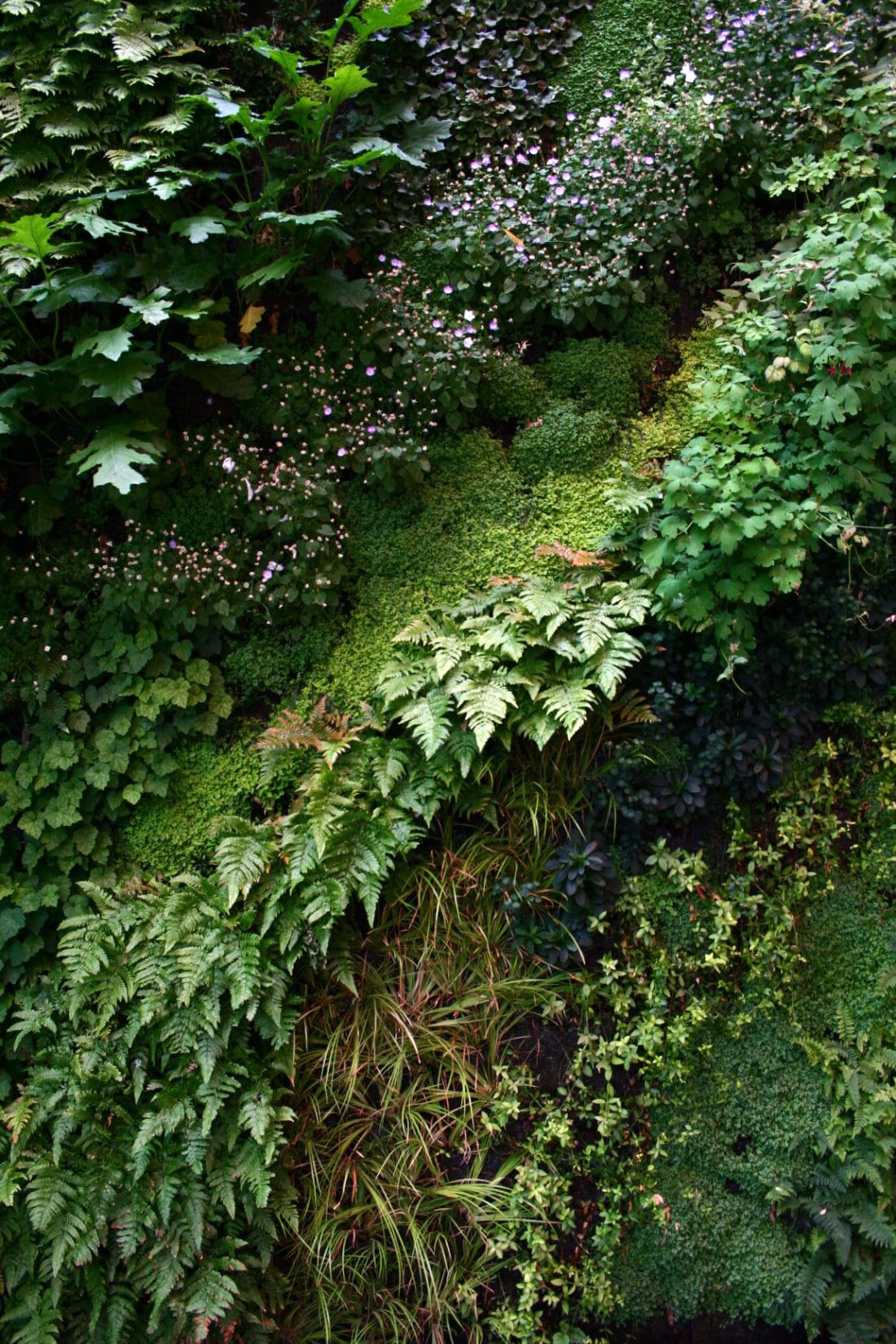
Perhaps you’ve heard it too – generally it seems to be haughty designers who sniff at the idea of a vertical installation. The excuse I hear most often is that “it won’t last” – “the garden will look terrible in a year”. But isn’t this true of any garden that isn’t properly cared for? Answer: Yes.
If you want to plant a meadow, you might consider someone who specializes in prairies, and this sort of ecology. Similarly, you might inquire with an orchardist to plant and manage a fruitful grove of trees. The same is true for vertical gardening. Planting on walls, where plants are stacked above each other and against the forces of gravity, will reauire much more than just good construction and a design eye. It requires detailed knowledge of plant communities and how they behave and how they will grow together. And it requires a unique system will support their health.
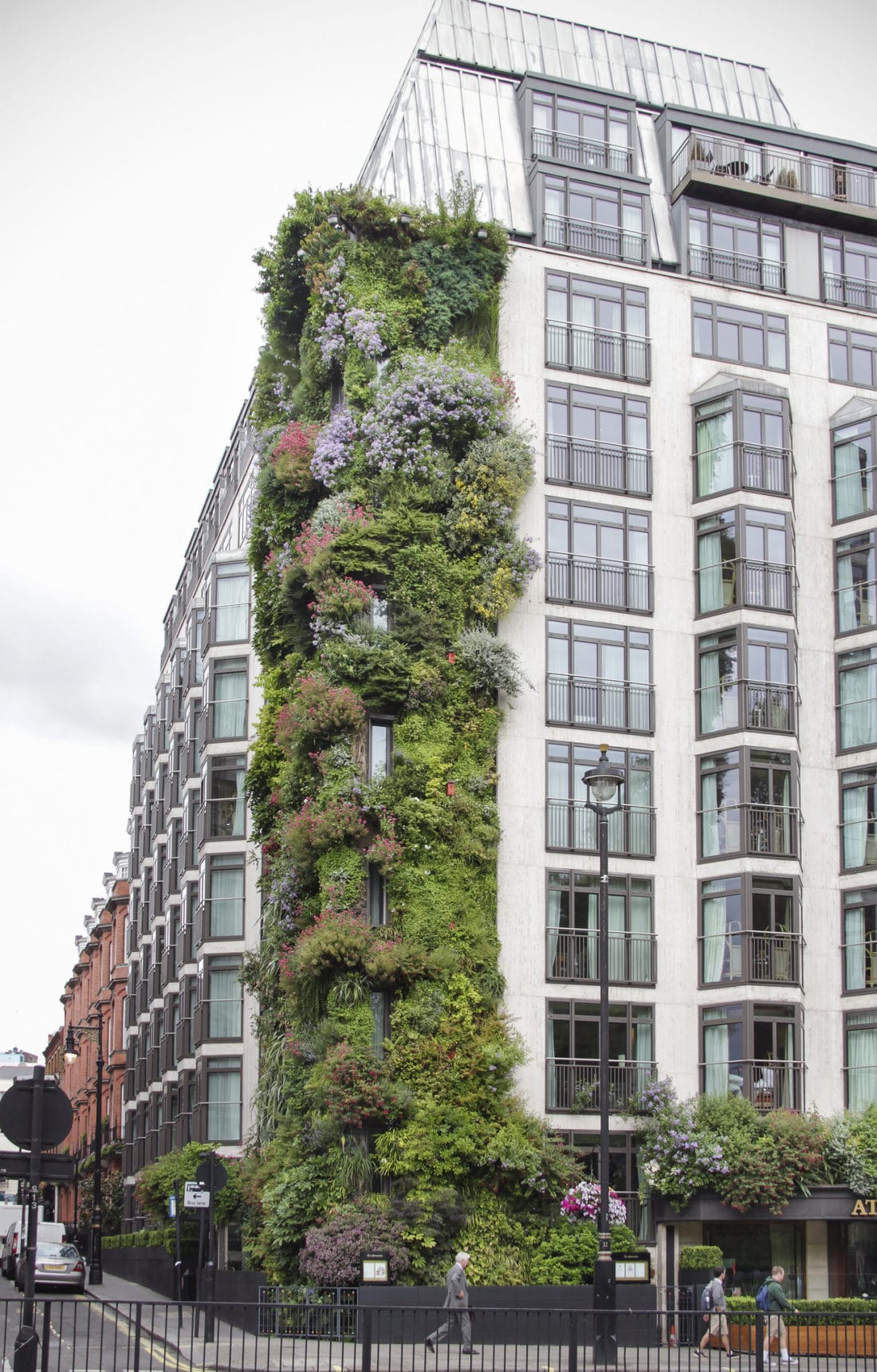
The Athenauem Hotel in Mayfair, London designed by Patrick Blanc.
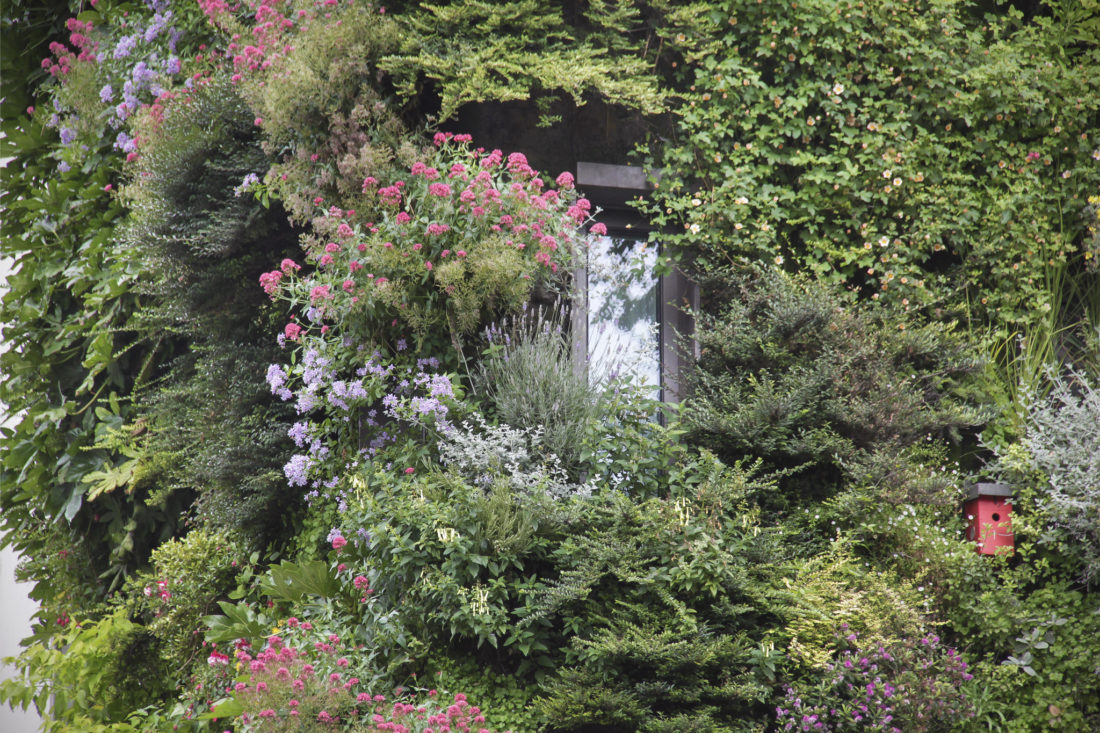
Advice for Designing a Vertical Garden
As a huge fan of his work and the impact that a well built large scale installation can have on an environment, I’ve read a lot about Patrick. I’ve compiled some of his advice for designing and building vertical gardens.
- Just like in a horizontal garden, plants wax and wane. You must know how a plant will perform on its own in the environment. But additionally,you need to ensure that you have enough variety to ensure the collection can support itself and is successful year round.
- Many vertical garden plants need regular pruning – just like horizontal gardens. Having a plan for this and for other regular maintenance is essential.
- Consider how you will experience this garden. If you are going to get up close to this garden, then fine leaf texture and form is very important. Use color and more distinctive contrast for a garden accessed only from a distance.
- A vertical garden, like any garden, will become part of the local ecosystem and will support pollinators, birds and wildlife. Plan for this by adding birdhouses and bughouses, and by making sure that construction can withstand the creatures that may move in.
- Take inspiration from nature and plant things as they would grow in naturally. Many plants grow vertically all on their own and they will be more likely to succeed in a fabricated setting. The most successful vertical gardens re-introduce nature back into urban and built environments. It is important to use plants that fit climate and ecosystem.
Remember, there are show gardens and there are real gardens. Show gardens are often just like fashion shows. They are heightened experiences- built to showcase creativity and ideas. But the clothes they feature are generally not for every day living.
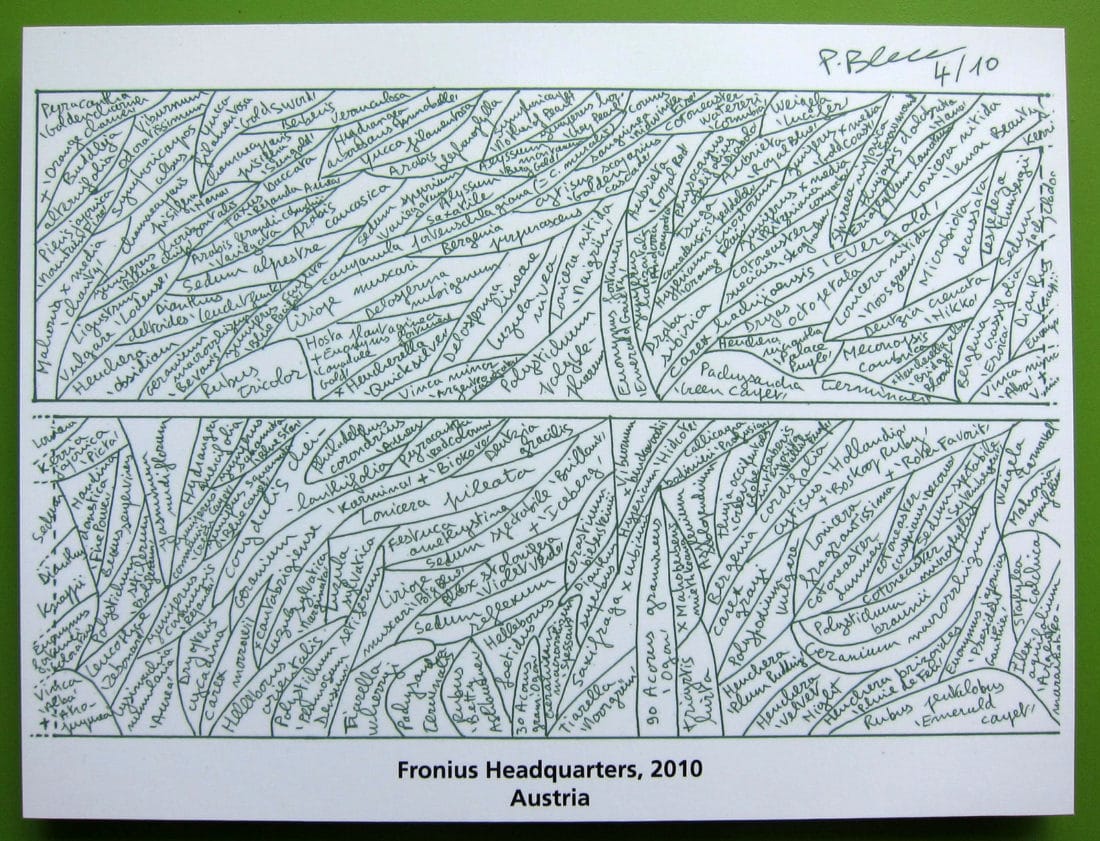
Patrick Blanc’s planting plans are not only as detailed as the most spectacular herbaceous border at at the most impressive British country house – but he also copyrights each of his designs so that the layout cannot be reproduced for public acclaim or financial gain.
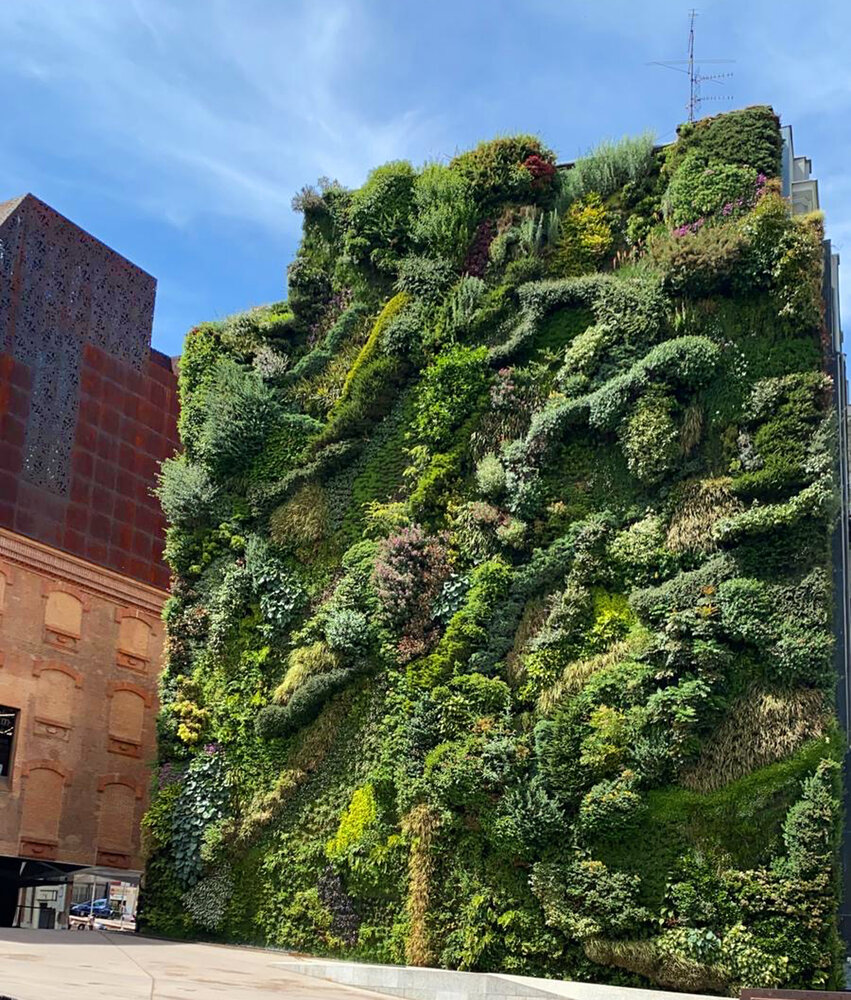
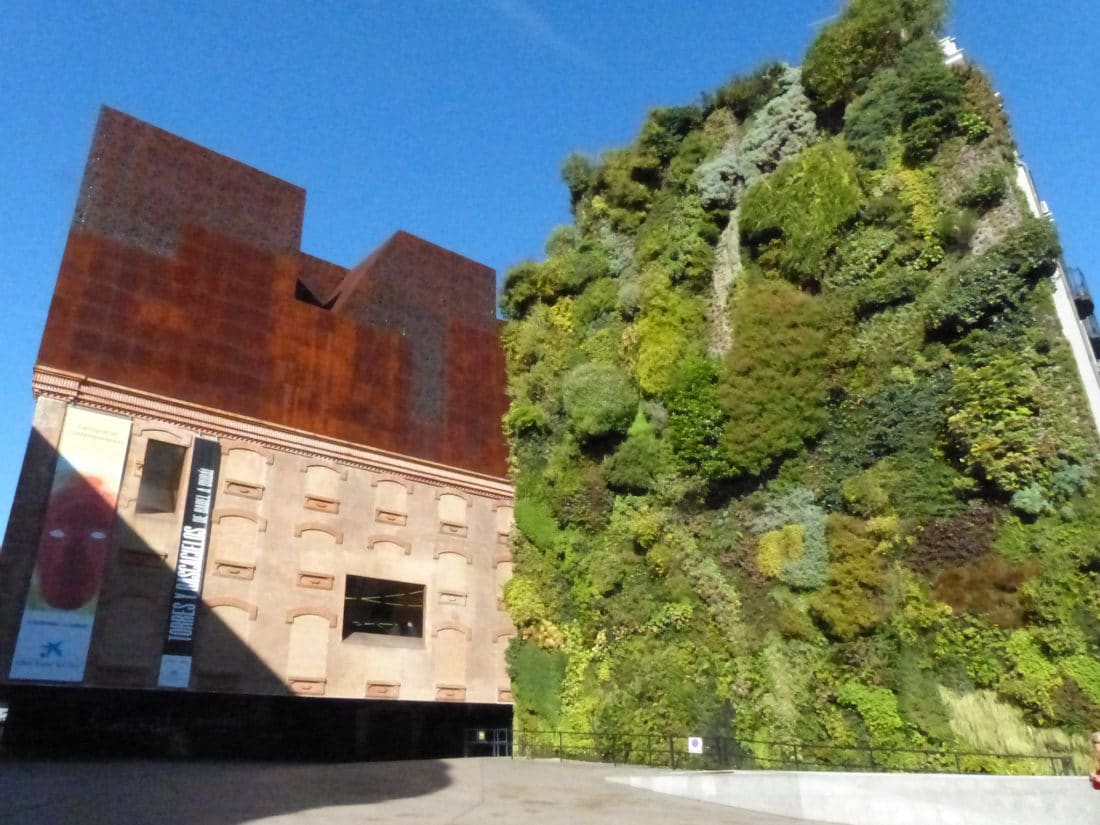
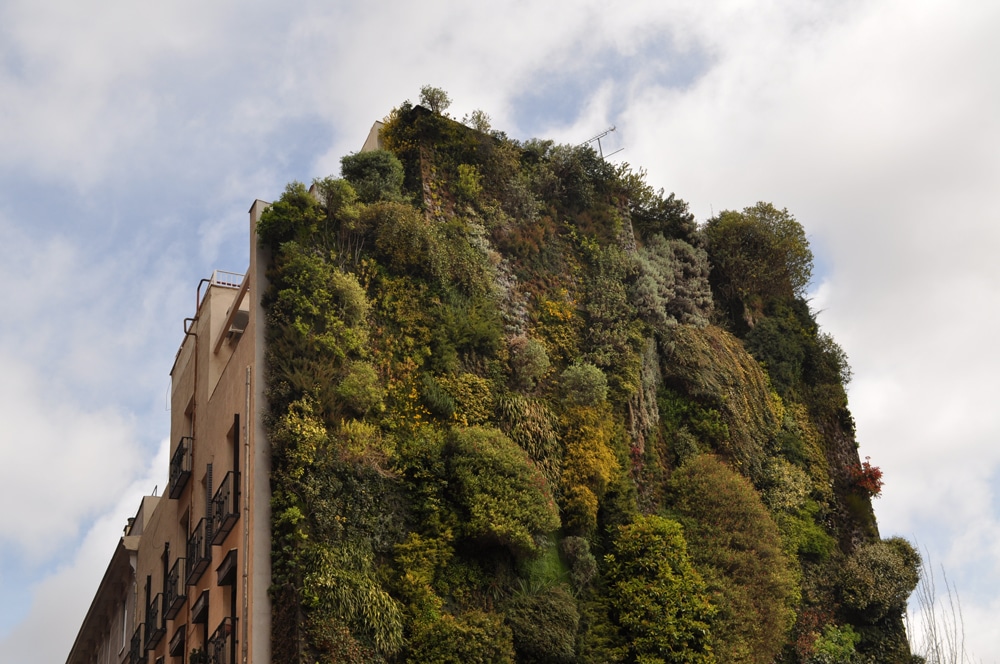
The three images above show the vertical garden at the CaixaForum in Madrid in various seasons.
Rick Herrero and Patrick Blanc, creator of Drew School’s ‘living wall’ in San Francisco. The 1,720sf project is the largest vertical garden installation in the U.S..
Contact Patrick Blanc through his website.
images by: Christine Vaufrey, Romuald Le Peru, KotomiCreations, Steve Silverman, Pleuntje and Bosc d’Anjou, Herrero Contractors all by CC.

+comments+